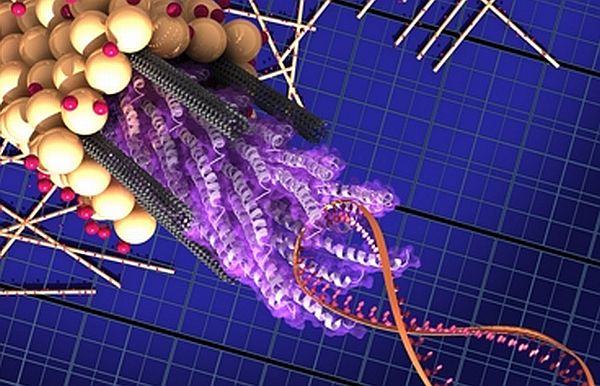
MIT researchers have found a way to improve the power conversion efficiency of solar cells. They have used a genetically engineered version of a virus called M13 to help improve one particular step in the process of converting sunlight to electricity.
A solar cell works like this – when sunlight falls on the light-harvesting material, electrons are released and harnessed to produce an electric current. According to the MIT research team, adding microscopic carbon nanotubes (hollow cylinders of pure carbon) can increase the efficiency of electron collection from a solar cell’s surface.
In the earlier attempts when the researchers tried this nanotube it created two problems. First, sometimes it was acting as semiconductors, sometimes as metals. The second problem was, nanotubes tendency to clump together, which reduces their effectiveness.
To overcome these problems, the research team found that the M13 virus can be used to control the arrangement of the nanotubes on a surface, keeping the tubes separate so they can’t short out the circuits. It also keeps the tubes apart so they don’t clump.
In a solar cell, first light energy releases electrons from the solar-cell material (usually silicon); then, those electrons are funneled toward a collector, from which they can form a current that flows to charge a battery or power a device. After that, they return to the original material, where the cycle starts again. The new system helps the electrons find their way – the carbon nanotubes added to the cell provides a more direct path to the current collector.
The viruses actually perform two different functions in this process. First, they possess short proteins called peptides that can bind tightly to the carbon nanotubes, holding them in place and keeping them separated from each other. Each virus can hold five to 10 nanotubes, each of which is held firmly in place by about 300 of the virus’s peptide molecules. In addition, the virus was engineered to produce a coating of titanium dioxide (TiO2), a key ingredient for dye-sensitized solar cells, over each of the nanotubes, putting the titanium dioxide in close proximity to the wire-like nanotubes that carry the electrons.
The research team was composed of graduate students Xiangnan Dang and Hyunjung Y, working with Angela Belcher, the W. M. Keck Professor of Energy, and several other researchers.
Via: MIT News




